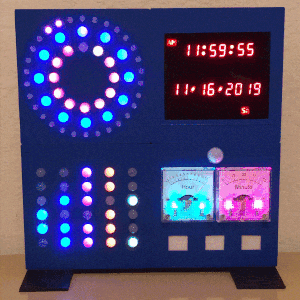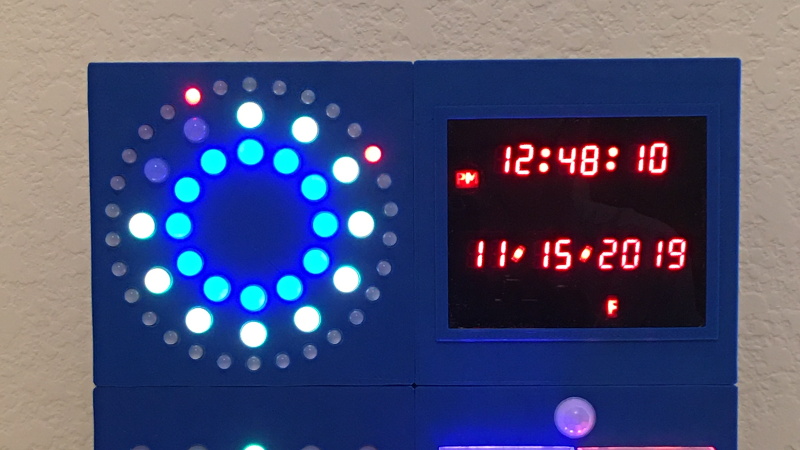If we’ve learned anything over the years, it’s that hackers like weird clocks, and they love packing as many multicolored LEDs into a device as is humanly possible. Combine both of those concepts into one project, and you’ve got a perfect storm. So as far as unnecessarily complex timepieces go, we’d say the “Crazy Clock 4” built by [Fearless Night] ranks up there among the all-time greats.
 This Arduino Pro Mini powered clock syncs the current time via GPS, with a temperature compensated DS3231 RTC to keep it on the straight and narrow between satellite downlinks. Once the clock has the correct time, how do you read it? Well, at the top you’ve got a basic numerical readout for the normies, and next to that there’s a circular LED display that looks like it could double as a sci-fi movie prop. On the lower level there’s a binary clock for the real show-offs, and as if that wasn’t enough, there’s even dual color-coded analog meters to show the hours and minutes.
This Arduino Pro Mini powered clock syncs the current time via GPS, with a temperature compensated DS3231 RTC to keep it on the straight and narrow between satellite downlinks. Once the clock has the correct time, how do you read it? Well, at the top you’ve got a basic numerical readout for the normies, and next to that there’s a circular LED display that looks like it could double as a sci-fi movie prop. On the lower level there’s a binary clock for the real show-offs, and as if that wasn’t enough, there’s even dual color-coded analog meters to show the hours and minutes.
[Fearless Night] has provided everything you need to follow along at home, from the Arduino source code to the 3D models of the case and Gerber files for the custom PCB. Personally we think just the top half of the clock would be more than sufficient for our timekeeping needs. If nothing else it should help save some energy, as the clock currently pulls an incredible 20 watts with all those LEDs firing off.
Should you decide to take a walk down memory lane and check out some of the other interesting LED clocks we’ve featured in the past, you’d be busy for quite awhile. But for our money, it’s still hard to beat the impossibly obtuse single-LED clock.

















The time on the circular panel is quite hard to read. Slower than reading the digital and certainly slower than an analogue clock. Binary is pretty cool though, works well for what it is.
Too much blue and white LEDs. It will be annoying at night. And it would look better with red, green and yellow LEDs instead…
Nice that it uses a time reference like GPS, and even better that it indicates when it has a lock.
Darned shame about that confusing middle-endian date format though, and the hardware implementation of the separators make it impossible to configurable to a saner format through software alone.
Ignoring the form of the separator as it could be fixed by using an optical overlay.
dd/mm/yyyy would work too. If you were to use only 2 digits for the year, you can use yy/mm/dd format, use the remaining 2 digits empty or day of the week or some other things.
middle-endian date is the best format. Change my mind.
Didn’t you mean. “date is the middle-endian best format. My change mind” :-p
Obligatory xkcd link: https://xkcd.com/1179/
I recently bought a radio-controlled clock with alarm and temperature display.
No need to adjust the UTC offset and the winter/summer time.
Powered by 2 AAAs.
Cost me 6.00 euros.
Nice display project though, looks like a christmas tree… ;)
A bit difficult to strap to one’s wrist though…
Oh, I don’t mean yours Jibe’, I mean the one in the article!